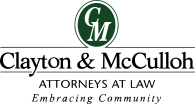As a number of communities that we represent have aged, an increasing number have come to us with questions as to who has responsibility for maintenance and replacement of trees. As many of you know, especially for communities built in the 1990s, many local governments required new developments to plant a number of trees, especially oak trees, adjoining paved portions of streets. Over time, these trees have grown, sometimes causing damage to roadways and structures. Some associations may believe that the location of such trees is within the yards of the homes adjacent to the street trees, and as such, the homeowner would have responsibility for the trees. While this may be the case for some homes, we have discovered that, especially for communities with private streets owned by the association, the trees may actually be located within the area designed on the plat as a common area roadway right-of-way tract. In other words, while it may appear that a tree may be within an owner’s yard, the tree may actually be placed within the common area roadway tract. Therefore, unless otherwise specified within the association’s documents, an association may have responsibility for maintenance and replacement of the trees. It may be a good idea for your association to have a survey done to indicate which trees exist within association common areas, or, at a minimum, attempt to determine by measures indicated on the association’s plat, whether the trees are located within a common area roadway tract.
While an association may have responsibility for a tree located within its common areas that does not mean that the association would necessarily be responsible for damages to structures caused by any such tree. Given the assumption that the damaged structure is on land owned by the homeowner, and the tree is located fully on association common area, pursuant to Florida law, the homeowner is generally responsible for the non-casualty damage to his/her structure being caused by the tree. The homeowner does have the right to cut back the roots and/or branches that come onto his/her lot, but the homeowner is also liable for any damage that is caused to the Association common area and/or tree by his/her action.
As I am sure you can tell, situations involving trees can become quite “shady” for an association. It’s important to involve legal counsel in any situation where an association is connected with damage from a tree.

